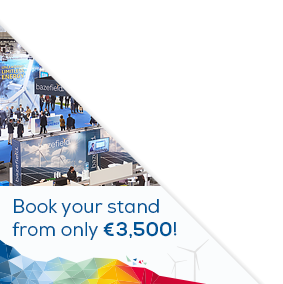Posters
Siblings:
ProgrammeSpeakersPostersStudent programmeContent PartnersMarkets TheatrePowering the Future stageProgramme Committee & abstracts reviewersPresenters’ dashboardCome meet the poster presenters to ask them questions and discuss their work
We would like to invite you to come and see the posters at our upcoming conference. The posters will showcase a diverse range of research topics, and will give delegates an opportunity to engage with the authors and learn more about their work. Whether you are a seasoned researcher or simply curious about the latest developments in your field, we believe that the posters will offer something of interest to everyone. So please join us at the conference and take advantage of this opportunity to learn and engage with your peers in industry and the academic community.
On 9 April at 17:15, we’ll also hold the main poster session and distinguish the 7 best posters of this year’s edition with our traditional Poster Awards Ceremony. Join us at the poster area to cheer and meet the laureates, and enjoy some drinks with all poster presenters!
We look forward to seeing you there!

PO114: Wake modelling in onshore stable atmospheric conditions
Dana Lukassen, Team Leader Advisory / Principal Renewable Energy Consultant, Wood PLC
Abstract
Based on the Author's recent experience, primarily but not exclusively in the Nordic region, there is a growing body of evidence, primarily from operational wind farm SCADA data, that suggests conventional wake models with typical parametrisation that are used extensively in the wind industry under-predict the magnitude of wake losses. It is postulated that this is, at least in part, due to prevailing stable atmospheric conditions leading to wake effects persisting for greater distances downstream than typically modelled in the onshore environment, although other factors, such as cumulative induction zone effect (CIZE), also termed blockage effect, may also be relevant. The magnitude of wake loss under-prediction can be significant and may be particularly relevant within large development clusters. During energy yield assessment reconciliation exercises, adjustments are considered for all factors that can be quantified from operational data, such as wind resource and turbine availability; however, there are other factors, such as wind flow model error and turbine power performance, that cannot be quantified. As such, there is some degree of uncertainty regarding the level of bias that may be attributed to wake loss modelling in isolation. Nonetheless, evidence, including wake model validation, suggests that wake loss under-prediction is a significant contributing factor. Based on the individual wake model results and a reconciliation assessment, the level of uncertainty associated with wake modelling is appraised to advise appropriate uncertainty allocations in energy yield assessment.
No recording available for this poster.



